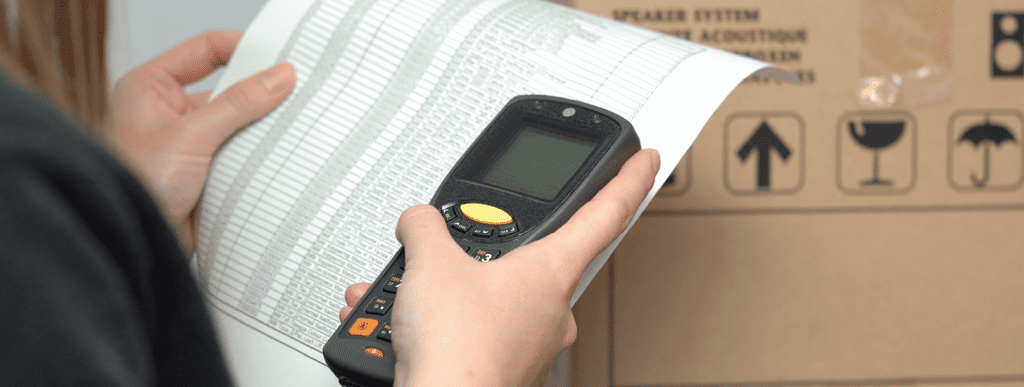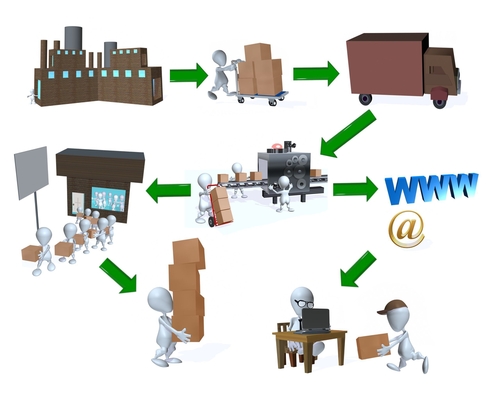Expanding Retail Business with System over People
Technology is now an inevitable part of the retail landscape. Any enterprise worth its byte would now have an integrated POS and CRM suite, with features to take care of the entire gamut of operational functions, including sales, transactions, inventory control, suppliers and ordering management, and more. Many establishments integrate their marketing and other functions as well, rendering a comprehensive enterprise-wide system. However, over and above such infrastructure backbone, what matters is the design of the system.
While the importance of the “human touch” can never be understated, many enterprises place to a stake on the human effort. Depend on such “human touch” to advance a process leaves such businesses susceptible to various risks, such as human error, communication gap, accountability issues, disjointed experiences in different stores leading to poor customer satisfaction, and violation of compliance regulations owing to an oversight.
A systems-driven approach is a key to overcome such issues. Devising sound, robust, and foolproof systems, and overlaying the human element, or the personal touch, above such systems, offers the best of both worlds.
The Superiority of Systems-Driven Approach
A system driven approach, with well-drawn out processes for all functions, complete with checks and validations improves employee productivity, deliver organizational efficiency, improves the bottom line, and results in better customer experiences. In fact, the various time-tested quality standards, such as Total Quality Management and ISO primarily mandate establishing systems and following it.
Systems driven approach offers as clear cut process for everything, and ensures all validations and checks are implemented at the right time. This frees the business from the risks of human error or oversight. The best of effort notwithstanding, humans are prone to make errors. In the retail business, for example, heavy rush may result in the shop-floor executive skipping some items in billing, some ordered and paid-for items falling off the packing and shipping delivery chain, or an important customer being ignored.
The necessity of sound systems manifests itself, especially in inventory management. Relying on human estimation or manual practices may result in excess inventory or shortage of inventory, both of which suck the winds of a retailer. The National Retail Federation estimates U.S. retailers losing $224 billion owing to excess inventory and $45 billion from having inventory in stock. A systems based approach, which automates the inventory handling process, and ensures optimal inventory for various scenarios help cut down such losses, and in the process deliver customer delight.
A systems-driven approach also promotes accountability. The system fixes specific roles for everyone, broken down into actionable tasks. The tasks are transparent to everyone in the supply chain, with the option to track progress. The employees get role clarity and the right tools to perform their tasks easily. Supervisors and managers may step in at critical points to resolve trouble-spots, or even pre-empt issued proactively.
Another key blind spot for businesses, especially retail businesses, is gaps in communication. Lack of seamless communication systems makes the enterprise dysfunction. It leads to various ills, such as hold-up of processes and the supply chain for want of information on how to proceed, employees doing a wrong thing owing to lack of clarity of instructions, executives providing incomplete, vague, or misleading information to customers, and more.
The two basic prerequisite to smoothing the communication flow is:
- Eradicating data silos and link the entire gamut of data repositories to a single pane or control
- Establishing a robust single platform for collaboration
Most enterprises underestimate the implications of compliance issues. Regulations may seem like a drag, but failure to comply with regulations, and filing timely reports can result in heavy fines, loss of reputation, and may even sound the death-knell of the business. Many regulations make for sound security and control practices in its own right. Establishing systems make it possible to embed the regulatory requirements into the process, and also generate compliance reports easily.
The Other Side: The Ills of the Superiority Driven Approach
An often raised grouse against the systems driven approach is its inflexibility and its emphasis on the process over customer convenience. As the adage goes, following the system rigidly may lead to the classic case of being “penny wise, pound foolish.” The fault, however, in most cases, lies more with poorly designed systems than the approach itself.
Consider the case of customer care where the customer seeking to raise a service request or return an item is greeted with an automated menu and has to press an infinite number of options, before getting to speak with a human voice, if at all. The long delay to resolve what may be a simple matter would be out rightly frustrating. Instances of such insensitive menus having driven away customers are far too many. Such issues put the spotlight on the systems design. The option in the above example would be to provide two streams, a self-service option with automated menus, and an option to hear a human voice directly when the human agent guiding the customer to select the correct options. Another option would be to offer different numbers for different issues, reducing the waiting time. Yet another option is to offer multiple modules, such as email, live chat, and more, to reach out to customer support, which would allow frustrated customers to try other channels.
Another often raised drawback of the systems driven approach is the inability of the business to seize the moment. A high-value customer may have a special request, which the rigidity of the system may not facilitate. The customer, offended, may take his business elsewhere, or the business may simply lose a good opportunity. Consider the case of a regular high-value customer wanting to hold the last piece of a product for a day, before he makes up his mind, which the system may not allow. The solution is to build flexibility into the system, allowing the “humans” managing the system, to exercise options in all possible eventualities, with a proper chain of authorizations.
It is also pertinent to ensure the system is flexible and scalable. No business can expect to survive by remaining static in today’s highly fluid business environment. Only systems with inbuilt flexibility and scalability to adapt to different needs and situations as they emerge would succeed. Likewise, the onus is on the stakeholders to review the system from time-to-time and make changes as required.
Why Systems Based Approach Works
An intuitive system which offers effective coordination, sync, and validation makes the business process more transparent and efficient. Such a system, delivered to relevant stakeholders in the form of intuitive smartphone or tablet based apps, would:
- Make explicit to all stakeholders what exactly needs to be done at their level, and at what time.
- Render role clarity to employees and other stakeholders.
- Provide tracking and monitoring facility, for managers and supervisors to remain in control, and at the top of their game.
- Enable field service agents, on-the-move managers, and others, to remain connected always, even from geographically isolated places, and when commuting, reducing hold-ups, accelerating the pace of work, and seizing extremely time-limited opportunities.
- Send out notifications to the main office, to managers, floor level supervisors, or other stakeholders, keeping them updated in real time of any critical incident or action point which requires action or resolution before the supply chain or workflow can proceed.
- Track and collect payments on a timely basis, leading to optimal allocation of resources
- Automate route processes, right from promotional emails to reminders, and from updating accounts to scheduling duty rosters for customer support agents, freeing the enterprise from non-productive “staff” functions. Enterprises can focus their energies on their core business instead.
Mobile apps integrate and pull in data from the entire gamut of enterprise systems and repositories, from the CRM suite to the ERP system, and from accounting software to HRIS, and more. It delivers comprehensive, up-to-date-information, free from data silos and other inefficient plaguing manual handling and analysis of data. It efficiently links various aspects of business operations, enabling the enterprise to work seamlessly and with optimal efficiency. The net result is happy employees, happy customers, and a well-oiled system which seizes all opportunities which come its way.
Stay up to date on what's new

Recommended Posts

31 Aug 2017 Retail
How Big Data and Analytics are Evolving Customer Experience in Retail
The retail market has seen a drastic change from physical stores to online sales platforms. With the advent of the internet and the freedom to access it from anywhere, brick-and-mortar……

10 Nov 2015 Retail
How Important is Technology in Retail: 4 Focus Areas
The retail industry is one that constantly strives to stick to margins. It’s a live or die scenario for most retail companies these days, with their managers struggling to maintain……
Featured Blogs
Stay up to date on
what's new


























































